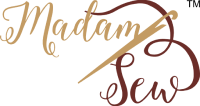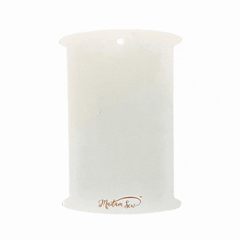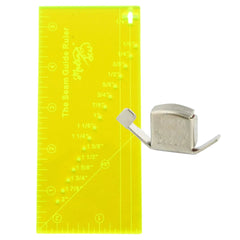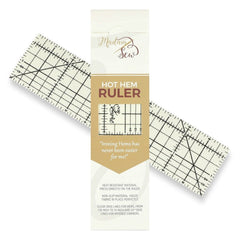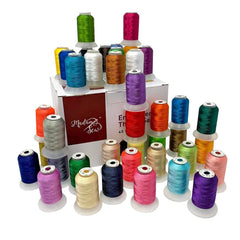MAKE A FAST AND EASY HOUSE QUILT BLOCK
House Quilt Block Greeting Card
The House Quilt Block is the star of this mini project. It is a quick and easy 5.5-inches wide by 8.5-inches deep quilt block that you can make in about half an hour.
Finished House Quilt Block
The House Quilt Block is a variation of the Schoolhouse Quilt Block. This quilt block is rich in history as well as nostalgic symbolism. Did you know that this quilt block has been popular for over 100 years? And, that a schoolhouse quilt was exhibited at The Metropolitan Museum of Art? Best of all, it is so easy to make.
School House Quilt At The Met
The House Quilt Block is not only perfect for a Mother’s Day Greeting Card project. It is great to decorate your home with pillows, potholders, placemats, table runners, wall hangings, mug rugs, and much more. I think you get the picture, after one hundred years of popularity, the applications are only limited by one’s imagination. Let’s make the versatile block!
You’ll use one quilt block and one piece of coordinating fabric. The sewing is all ¼-inch straight seams. There’s no need to measure tiny fabric pieces while making the house quilt block. All the work is done for you because this project includes a free template that you simply trace and cut!
I will make a greeting card for Mother’s Day with the house quilt block. If you are interested in doing that as well, you can consider this blog as part one where you’ll learn how to make a house quilt block and next week we will publish part two, where you’ll learn how to turn the quilt block into a greeting card.
Checklist and Supplies Needed To Make the House Quilt Block
Be prepared for this project. See “Supplies”, “Fabric” and “Getting Ready To Sew”.
Supplies and Tools
These are the tools and supplies that I used to make the greeting card.
• Quarter Inch Quilting Foot With Guide for piecing the block
• A 90/14 Sewing Machine Needle
• Sewing Stiletto and Rolling Seam Presser
• Long Flower Pins or Sewing Clips
• Rotary Cutter, 6 X 24 inch Ruler, 6-inch Square Ruler and a Rotating Cutting Mat
• Recommended: Access to a printer for printing out the House Quilt Block templates.
Closeup Of Supplies
Fabrics
You will need the following fabrics:
• A 1-½ inch wide by 37-inches long strip of the floral print fabric. This will be used to piece a 1-½ inch border around the House Quilt Block.
• A 15-inch square of light fabric
• A 15-inch square of dark fabric.
You will need one light fabric and one dark fabric to make the House Quilt Block. From the light and dark fabrics, you will cut the 16 pieces that will create the House Quilt Block. Two different cutting methods are provided for you – Rotary Cutting and Templates. The rotary cutting instructions are more challenging because They will require cutting shapes with various angles.
Cutting the Pieces for the House Quilt Block
Rotary Cutting Versus Templates
Rotary cutting is the familiar measure and cut method to create each piece of a pieced block.
The templates is a trace-and-cut method to create each piece of a pieced block. It requires access to a printer to print the templates on letter-sized (8 ½ inches wide by 11 inches deep) paper. These paper templates are individually cut out along their dotted lines. The paper templates are traced on fabric and then cut out. These cutouts are the individual pieces of a pieced block.
Templates are popular with quilters because ruler measurements are not needed and they are excellent for pieces that are curved or irregularly shaped. Examples of templates are: appliqué motifs like flowers, animals, letters, numbers, or hand-drawn shapes.
Fabrics
House Quilt Block Rotary Cutting Measurements
Tip: There are irregular shapes in the rotary cutting method. I recommend you use the templates, but rotary cutting instructions are provided.
Each piece after it is cut out is called a “patch”. The rotary cutting visuals are also provided as a printable PDF as a handy reference. Here are the measures.
Patches Measurements:
• A is 2-3/8 wide by 1-7/16 deep: Cut two light fabric patches
• B is 2-3/8 wide by 1-1/8 deep: Cut two dark fabric patches
• C is 2-15/16 wide by 2-3/8 deep: Cut one light patch
• D is 3-1/4 wide by 1-9/16 deep: Cut one light patch
• E is 5-1/4 wide by 3-9/16 deep: Cut one light patch
• F is 5-1/4 wide by 1-1/8 deep: Cut one light patch
• G is 2-5/16 wide by 1-7/17 deep: Cut two dark patches
• H is 3-5/16 wide by 1-1/8 deep: Cut two dark patches and one light patch
• I is 3/14 wide by 9/16 deep: Cut one light patch
House Quilt Block Piece J
• J is 3-5/8 wide by 2-3/8 deep: Cut one dark patch. This an irregular-sized rectangle, the left corner angle is 116-degrees, and the right corner angle is 64-degrees.
House Quilt Block Piece K
• K is 2-11/16 wide by 1-1/16 deep: Cut one light patch. This is an irregular-sized rectangle, the left corner angle is 64-degrees, and the right corner angle is 116-degrees.
House Quilt Block Piece L
• L is 2-5/8 wide by 2-11/16 deep: Cut one dark patch. This is a 64-degree isosceles triangle.
How To Use Templates
As I mentioned, templates are the perfect choice when the pieced block are irregular shapes.
Closeup Of A Template
The templates have two lines. A dotted line and a solid line. The dotted line is the cutting line. The space between the dotted line and the solid line is the ¼-inch seam allowance. The solid line is the finished size of the piece, in other words, after it has been sewn into the block.
The detailed instructions to cut the template for the house quilt block are explained in the next chapter.
Make The House Quilt Block in Four Easy Steps
Step One: Trace the House Quilt Block on Fabric Scraps Using the Templates
Download the house block pattern and print out the template on 8 ½ inches wide by 11-inches deep printer paper.
Key Block For Templates
Place the “Key Block” illustration in view of your workstation so that you can easily refer to it. The Key Block a reference that tells you where each template fits on the block layout. It functions like a key or legend that is included on maps.
Tracing The Template On The Fabric
On the light fabric, trace and cut templates A, C, I, K, D, E, F, K and make one of H.(This is one of the three patches made from the H template. The other two patches are cut from the dark fabric)
Rolled Painter’s Tape
Tip: Tape the back of the template to the fabric with rolled painter’s tape. This will prevent the template from shifting as you trace it. Then trace the template with a chalk marker.
Cutting The House Quilt Block Fabrics
On the dark fabric, trace and cut templates B (make two), L, J, G (make two) and make two of H.
Step Two: Piece the Fabric Scraps Using the Piecing Layout
Follow the House Quilt Block Layout and start with Row 1.
House Quilt Block Layout
Piece the light and dark fabrics cut from the templates from left to right using the House Quilt Block Layout. Press the seams towards the dark fabric.
Piecing Row One
• Piece light fabric A to dark fabric B
• Piece light fabric C to dark fabric B
• Piece dark fabric B to light fabric C
• Piece light fabric A to dark fabric B
Finished Pieced Row One
Row One is complete. Place it aside and gather your materials to piece Row Two.
Follow the House Quilt Block Layout and start with Row 2.
Piece the light and dark fabrics cut from the templates from left to right.
Piecing Row Two
• Piece light fabric I to dark fabric L
• Piece light fabric K to dark fabric L
• Piece dark fabric J to light fabric K
• Piece light fabric D to dark fabric J
Finished Pieced Row Two
Row Two is complete. Place it aside and gather your materials to piece row 3.
Piecing Row Three
Follow the House Quilt Block Layout and start with Row Three.
Make A Rectangle Piecing Sequence
Tip: If you have ever made a log cabin quilt block then, this method will be familiar.
Make a rectangle by piecing the three H fabrics together. Then top them with a dark G fabric. Complete the rectangle by piecing a dark G fabric to the bottom. You’ll find that the light fabric F easily aligns with this rectangle.
Let’s make the rectangle with the three H templates and two G templates.
Tip: Use your rolling seam presser to prepare the seams to lay flat, then press with an iron. Press the seam open.
• Sequence A and B: Take one dark fabric H and piece it to one light fabric H.
• Sequence C: Take one dark fabric H and piece it to the light fabric H. This will create a rectangle.
• Sequence D: Now piece one dark fabric G to the top of the triple H rectangle.
• Sequence E: Complete the rectangle by piecing one dark fabric G to the bottom of the triple H rectangle
The resulting rectangle is the perfect size to piece to the light fabric F. Go ahead and piece it.
Finished Pieced Row 3
Awesome! Your three rows are pieced. Now you are ready to assemble the rows which will complete the piecing of the House Quilt Block.
Assembled Rows
Step Three: Assembling The Rows
Piece row one to row two. Then piece row three to row two.
Pressing The House Quilt Block
Then press the seams flat. And press the front of the block. You’ll want the block to lay flat.
Tip: Use a rolling seam presser to train the seam to lay flat. A nice and flat block makes trimming the block easier.
Trimming The House Block
Trim the quilt block to 5.5-inches wide by 8.5 inches deep. This will prepare the block for the final step, adding the floral border. The goal is to have a finished quilt block of 7.5-inches wide by 10.5 inches deep. This will match up with the size of the floral fabric in part two of this project.
Piecing The Floral Border To The House Quilt Block
Tip: A half inch of the quilt block’s border will be folded around the perimeter of the greeting card in part two of this project. This will enable all of the house block image to be visible on the front of the card instead of some being hidden in the seam allowance.
Step Four: Piecing The Floral Border To The House Quilt Block
This step will be familiar to quilters who have pieced a border to a quilt. You’ll piece two opposite sides, press the seams to the dark fabric. Then trim to ensure the sides are even. and piece the remaining sides.
Tip: For a quick review of how to piece a border see Madam Sew blog: How To Use A walking Foot To Make A Quilt In A Day. Section: Adding Borders To The Quilt Top With A Walking Foot.
Pressing The Floral Border
Piece the 1-1/2 inch wide strip of floral fabric to all borders of the house quilt block.
Tip: Avoid having thread nests on the back of your seam. Extend the beginning fabric strip beyond the start of the seam. You’ll create a ‘runway’ that will catch that annoying lump of threads.
Start with the left and right borders, then piece the top and bottom borders.
Press the block flat and do the final trim of approximately 7.5-inches wide by 10.5-inches deep.
Finished House Quilt Block With Border Front
Look at your beautiful work. Your house quilt block is finished!
If you want to use this house quilt block to make a greeting card, you can go to part two of this project, where I will wrap the greeting card with fabric and make a Mother’s Day Greeting Card out of it.
Happy Quilting!
Ernie
Guest Blogger For Madam Sew
Ernestine “Ernie” Grant is an avid quilter with over 17 years experience and is the owner of the custom baby quilt business kalibabyquilts.com
As an African American living in Harlem, NY her view of quilting is shaped by her heritage and the elders who taught her–Quilting is not just thread, fabric and stitches. It is art, it is love, it is community.
Download this House Quilt Tutorial here
Download the House Quilt Template here



